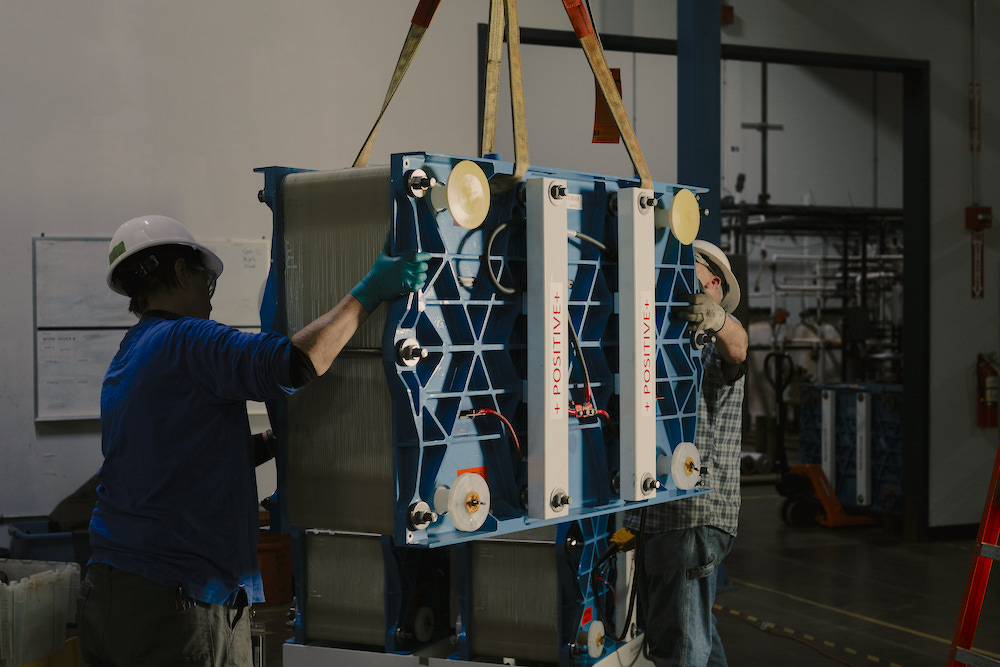By Eric Dresselhuys, CEO
The International Energy Agency recently declared that “The world is entering a new age of clean technology manufacturing, and countries’ industrial strategies will be key to success.” In the United States, major developments in 2022 positioned American manufacturers to lead the global clean energy transition. With this leadership position comes the opportunity for American workers and communities to realize broad benefits as we build the clean energy technology in demand worldwide.
What will these benefits look like? First, we will see accelerated progress in our fight against climate change. In addition to rapidly decarbonizing the energy system, rapid deployment of new technologies will underpin increasingly resilient energy infrastructure. This will ensure delivery of clean, reliable power even as extreme temperatures, wildfires, drought, and other climate-driven emergencies become the new normal.
Second, new jobs and economic opportunities will be created as American clean technology manufacturers, with the support of federal policies such as the Inflation Reduction Act (IRA), expand production and increasingly leverage domestic supply chains. It is estimated that the IRA will create more than nine million jobs within the next decade; incentives contained in the bill encourage these new jobs to be located in communities affected by the loss of fossil fuel infrastructure. As the University of Michigan finds, wind and solar jobs have the potential to fully replace jobs lost at coal power plants across the country without requiring employee relocation.
Third, historically disadvantaged communities, who have long borne the brunt of fossil fuel pollution, will begin to see relief. Communities of color are exposed to 28% more nitrogen dioxide pollution than higher-income, majority-white neighborhoods. The IRA contains key provisions to drive the benefits of new clean energy technologies towards those communities that have historically experienced the greatest impacts from fossil fuels.
At ESS, we are proud to play a role in delivering clean, resilient energy technology – and economic opportunity – that will underpin the emerging clean energy economy.
The iron flow batteries that ESS manufactures offer a sustainable, safe and non-toxic long-duration energy storage solution which will be critical to a decarbonized energy system. Demand for ESS technology is growing rapidly as utilities, independent power producers and other large energy users increasingly rely upon renewable energy. In 2022 alone, we announced major partnerships with the Sacramento Municipal Utility District (SMUD) for up to 2 GWh of energy storage over the next five years, as well as an agreement with Energy Storage Industries Asia Pacific, an Australian energy service provider, for up to 12 GWh of iron flow batteries.
ESS offers a case study in how new technologies can deliver economic opportunity. Nowhere is our positive impact more evident than in our hometown of Wilsonville, Oregon. According to a recent economic impact analysis, ESS’ operations in 2022 drove $173.4 million in economic activity and directly or indirectly supported over 530 full-time jobs. As we scale to meet growing global demand, the economic benefits that our operations deliver will grow as well.
In one scenario modeled, a tenfold increase in manufacturing capacity at our Wilsonville facility over 2022 levels would deliver an economic impact of $200 million, creating and supporting thousands of jobs through the expansion project alone. Once the expanded plant was operational, it is estimated that there would be nearly 2,000 employees in Oregon working to meet global demand for long-duration energy storage.
To learn more about how the clean energy transition will drive economic opportunity, read our latest Whitepaper: Delivering Opportunity: How the Clean Energy Transition Can Create Millions of Jobs and Drive the 21st Century Economy.

